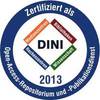Preview |
PDF, English
Download (17MB) | Terms of use |
Abstract
For life to emerge, a variety of different molecular building blocks must be available in sufficiently high concentrations to increase the chances of their assembly into the highly complex macromolecular machinery required without the aid of elaborate biological enzymes and compartments. In this thesis, we explore different environments in which prebiotic synthesis of these building blocks is feasible. This ranges from the interplanetary space of the early solar system in the interior of meteorite parent bodies to the surface of the early Hadean Earth in small bodies of water, so-called warm little ponds (WLPs), on the first landmasses emerging from the primordial ocean. The idea is to combine the exogenous and endogenous processes into a consistent and realistic scenario of the early solar system and the Hadean Earth within it. This includes bombardment by meteorites from space, which release excessive amounts of energy during impact, leading to the generation of reducing gases that are injected into the Earth’s atmosphere. Meteorites can also deliver prebiotic molecules formed in space, seeding the early Earth with the building blocks of life. In addition, geologic activity within the Earth’s mantle is included, leading to serpentinization of upwelling mantle material by chemical reaction with water that penetrates the Earth’s crust from the surface, releasing further reducing gases into the atmosphere. The goal is to assess the potential contributions and interactions of these different processes in setting the stage for the origins of life. We find that aqueous chemistry inside meteorite parent bodies can accurately describe and explain the prebiotic synthesis of the various biomolecules found in the meteoritic subclass of carbonaceous chondrites, with simulated and measured abundances of nucleobases, the sugar ribose, and vitamin B3 in good agreement, shown here for the first time. The key to achieving this was the introduction of a proper understanding of volatile depletion in the source material of meteorite parent bodies. If delivered by meteorites to the Hadean Earth surface, our simulations show that extraterrestrial biomolecules formed in space could have significantly elevated the concentrations of prebiotic molecules in WLPs. In addition, a carbonaceous bombardment in a reducing atmosphere is capable of releasing sufficient amounts of the reducing gas HCN (hydrogen cynanide) to rain-out into WLPs and drive the prebiotic synthesis of sufficient amounts of the building blocks of RNA, one of the most commonly favored starting points for the origins of life. The most important finding of this thesis is that serpentinization alone can reduce an initially oxidizing atmosphere with initial 90 % CO2 when modeled in a manner appropriate for the Hadean Earth. This might provide a solution to one of the oldest problems in the origins of life sciences, allowing effective prebiotic synthesis despite an initially oxidizing atmosphere that would otherwise be considered highly unfavorable. Not only that, but we were able to show that an initially oxidized atmosphere is actually a desirable state for prebiotic molecules, provided that high enough fluxes of reducing gases are emitted by serpentinization, as we indeed anticipate in the Hadean. The oxidizing atmosphere is reduced and exploited as a carbon source. The modeling of these various contributing mechanisms in this comprehensive scenario for the Hadean Earth and its host planetary system as a whole paints an optimistic picture for the preparation of a potent prebiotic soup on the Hadean Earth and beyond.
| Document type: | Dissertation |
|---|---|
| Supervisor: | Henning, Prof. Dr. Dr. h.c. Thomas K. |
| Place of Publication: | Heidelberg |
| Date of thesis defense: | 10 June 2025 |
| Date Deposited: | 18 Jun 2025 09:50 |
| Date: | 2025 |
| Faculties / Institutes: | The Faculty of Physics and Astronomy > Dekanat der Fakultät für Physik und Astronomie |
| DDC-classification: | 500 Natural sciences and mathematics 520 Astronomy and allied sciences 530 Physics 540 Chemistry and allied sciences 550 Earth sciences 570 Life sciences |









